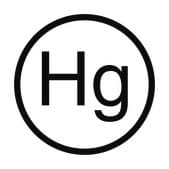21-0930
Nessler′s reagent
Synonyme(s) :
Dipotassium tetraiodomercurate(II) in dilute sodium hydroxide
About This Item
Produits recommandés
Forme
liquid
Pertinence de la réaction
reagent type: catalyst
core: mercury
Disponibilité
available only in Japan
Densité
1.097 g/mL at 25 °C (lit.)
Chaîne SMILES
[K+].[K+].I[Hg--](I)(I)I
InChI
1S/Hg.4HI.2K/h;4*1H;;/q+2;;;;;2*+1/p-4
Clé InChI
OPCMAZHMYZRPID-UHFFFAOYSA-J
Vous recherchez des produits similaires ? Visite Guide de comparaison des produits
Adéquation
Clause de non-responsabilité

Mention d'avertissement
Danger
Mentions de danger
Classification des risques
Acute Tox. 3 Oral - Aquatic Acute 1 - Aquatic Chronic 2 - Eye Dam. 1 - Met. Corr. 1 - Muta. 2 - Skin Corr. 1A - STOT RE 2 - STOT RE 2 Oral
Organes cibles
Thyroid
Code de la classe de stockage
6.1B - Non-combustible acute toxic Cat. 1 and 2 / very toxic hazardous materials
Classe de danger pour l'eau (WGK)
WGK 3
Point d'éclair (°F)
Not applicable
Point d'éclair (°C)
Not applicable
Équipement de protection individuelle
Faceshields, Gloves, Goggles, type ABEK (EN14387) respirator filter
Faites votre choix parmi les versions les plus récentes :
Déjà en possession de ce produit ?
Retrouvez la documentation relative aux produits que vous avez récemment achetés dans la Bibliothèque de documents.
Active Filters
Notre équipe de scientifiques dispose d'une expérience dans tous les secteurs de la recherche, notamment en sciences de la vie, science des matériaux, synthèse chimique, chromatographie, analyse et dans de nombreux autres domaines..
Contacter notre Service technique












